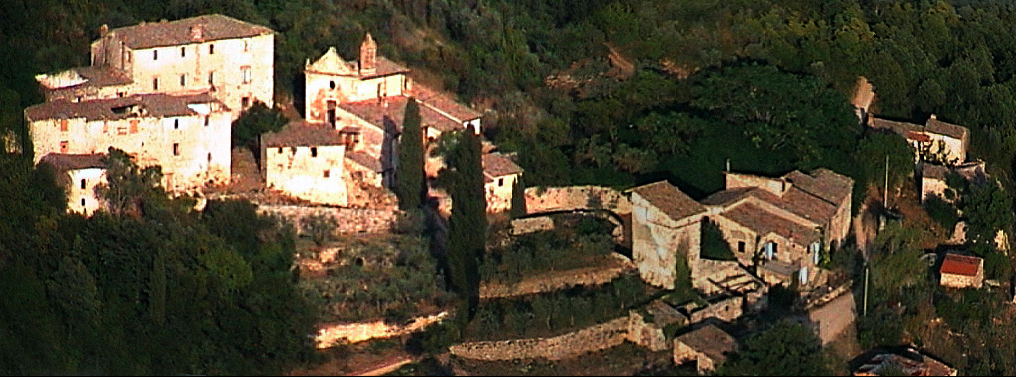HISTORY
Borgo Zampani is nestled among 32 rolling hectares of meadows and woodlands (centuries old chestnut trees and oaks). An extraordinary compound of 13th century medieval buildings, the Borgo offers extraordinary views of the verdant hills and sapphire skies of Umbria, a land of castles, fortified towns, ancient Roman thoroughfares, and exquisite cuisine in the heart of Italy.
The Borgo is a prime example of 13th-century Umbrian culture, bringing forth a first-quality urban site in perfect harmony with nature. And today, the views from the borgo remain among the most splendid in central Italy.
The area was inhabited between the eight and third centuries BCE and well settled in pre-Roman times. By around 220 BCE, the site of Massa Martana sat astride one of the most important Roman arteries linking northern Italy and the Adriatic, the Via Flaminia. The nearby Statio and Martis served as a center for rest and refreshments for soldiers and travelers of the era. Ponte Fonnaia, a bridge built in 220 AD, still stands, documenting the Roman past of the area.
A settlement, the Vicus Martis, developed around the Statio, well documented by surviving Roman inscriptions. With the accelerating spread of Christianity during the third and fourth centuries AD, Vicus Martis became known as Civitas Martana. Marvelous Christian catacombs from this period survive today in Massa Martana. Massa was home to several saints between the first and fourth centuries AD, including Saints Felice, Fidenzio, Terenzio, Faustino and Illuminata.
Unfortunately for the Umbrians, Alaric the Visigoth then razed the area surrounding the via Flaminia during the Goth-Byzantine wars. In the seventh and eight centuries AD, during the Longobardic domination, the Castle of Massa was constructed. Massa itself translates as "a group of fortified dwellings."
In the medieval times, the lowlands in the region became marshland, and the residents migrated to the nearby hills, building fortifications. The stones of today's borgo date some 700 years. Massa Martana developed as the seat of the Zampani family in the thirteenth century AD. The borgo became part of Massa Martana's domains in the 15th century, when Massa Martana freed itself from the rule of its larger fortified neighbor, Todi.
The interiors of the Borgo Zampani buildings were richly renovated in the 1800s. During the 20th century, the borgo became a private retreat for great families. The main buildings of the borgo perch on the side of a hill named Rottomario. An old legend says that during the Roman time -- at exactly that location -- two generals, Mario and Silla, fought a deadly battle. Mario's army was destroyed and hence the name: Broken Mario. Orginally, the name of the hill was Griptonario, a place full of caves. Saint Felice, the Saint Patron of Massa Martana martyrized in 303 DC, used to pray in one of the caves which is still visible and used to be the site of an annual procession.
